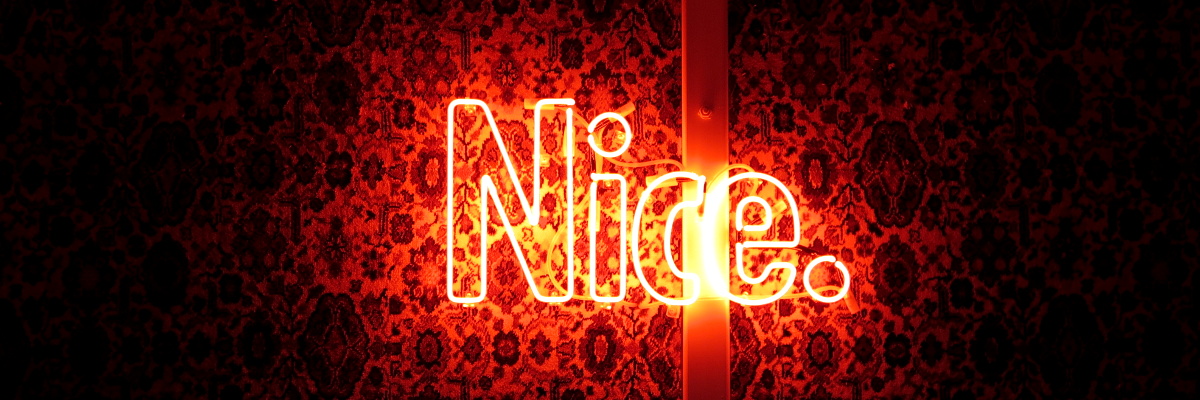
Last weekend gave us a fresh round of #BGONZAs — the Brewers’ Guild of New Zealand Awards.1 Continuing the new practice they started last year, the Guild has provided us not just with a list of who won what, but a full accounting of who tried to. So, like I did last time, I spent an oddly-enjoyable afternoon spreadsheeting and pivoting and entabulating the results and present them now for a little look behind the curtain at how the newly-expanded list of “Champions” are crowned, and to ponder the many different ways there are in which to succeed, and to fall short. There’s a lot going on — the awards, after all, cover most of the industry — but I think there’s a lot of interesting little details lurking.
My method is just as it was for 2017: ignoring ciders and packaging-related entries, I calculated two scores for each brewery2 — their Medal Percentage (MPC), and their Points Per Entry (PPE). MPC is the proportion of all beers entered that earned any kind of medal at all.3 This year, the overall MPC is 58% (up from 52% last year, which was apparently an increase on 2016), and roughly half the breweries did that well or better, and half fared worse. PPE, on the other hand, assigns 3 points for a gold, 2 for a silver, and 1 for a bronze,4 then divides that by how many beers were entered. As it was last year, a PPE of 1.0 or more put a brewery in the top third, performance-wise. If we then restrict ourselves to breweries who entered 10 or more beers — which avoids the noisier data from the smaller players but still includes all of this year’s Champions (but one, which we’ll get to) — the results look like this:5
Performance at the 2018 BGONZAs, for breweries with 10 or more beers entered
n = number of entries, MPC = medal percentage, PPE = points per entry, G/S/B = individual medals
| Brewery | n | MPC | PPE | G | S | B |
|---|---|---|---|---|---|---|
| Lion | 39 | 64.1 | 0.97 | 4 | 5 | 16 |
| ParrotDog | 17 | 76.5 | 1.41 | 4 | 3 | 6 |
| D.B. | 25 | 60 | 1.12 | 3 | 7 | 5 |
| McLeod's | 17 | 76.5 | 1.47 | 3 | 6 | 4 |
| 8 Wired | 14 | 71.4 | 1.5 | 3 | 5 | 2 |
| Kererū | 21 | 57.1 | 1.05 | 3 | 4 | 5 |
| Garage Project | 33 | 72.7 | 1.06 | 2 | 7 | 15 |
| Liberty | 15 | 86.7 | 1.6 | 2 | 7 | 4 |
| Behemoth | 16 | 81.3 | 1.38 | 2 | 5 | 6 |
| Fork | 17 | 52.9 | 0.94 | 2 | 3 | 4 |
| Sawmill | 14 | 64.3 | 1.07 | 2 | 2 | 5 |
| Three Boys | 12 | 50 | 0.92 | 2 | 1 | 3 |
| Boneface | 12 | 41.7 | 0.83 | 2 | 1 | 2 |
| Boston Beer | 19 | 21.1 | 0.42 | 2 | 0 | 2 |
| Panhead | 14 | 78.6 | 1.57 | 1 | 9 | 1 |
| Emerson's | 24 | 79.2 | 1.17 | 1 | 7 | 11 |
| North End | 10 | 90 | 1.7 | 1 | 6 | 2 |
| Deep Creek | 25 | 52 | 0.76 | 1 | 4 | 8 |
| Tuatara | 18 | 61.1 | 0.89 | 1 | 3 | 7 |
| Altitude | 13 | 53.8 | 0.92 | 1 | 3 | 3 |
| Sunshine | 12 | 50 | 0.92 | 1 | 3 | 2 |
| Rhyme and Reason | 13 | 53.8 | 0.85 | 1 | 2 | 4 |
| Lakeman | 13 | 46.2 | 0.77 | 1 | 2 | 3 |
| Moa | 17 | 41.2 | 0.59 | 1 | 1 | 5 |
| Boundary Road | 13 | 30.8 | 0.54 | 1 | 1 | 2 |
| Heyday | 11 | 63.6 | 0.82 | 1 | 0 | 6 |
| Aotearoa (Mata) | 10 | 60 | 0.8 | 1 | 0 | 5 |
| Harringtons | 14 | 57.1 | 1 | 0 | 6 | 2 |
| Dr Rudi's | 10 | 70 | 1.1 | 0 | 4 | 3 |
| Sprig & Fern | 21 | 47.6 | 0.62 | 0 | 3 | 7 |
| Fortune Favours | 17 | 41.2 | 0.53 | 0 | 2 | 5 |
| Renaissance | 12 | 41.7 | 0.58 | 0 | 2 | 3 |
| Eddyline | 12 | 33.3 | 0.5 | 0 | 2 | 2 |
The Guild made significant revisions to the awards this year, expanding the amount of “Champion” titles handed out — Champion New Zealand Brewery was split into three tiers based on production volume; Champion New Zealand Exhibitor was added, to recognise the best performance in “batting average” terms; and the new Champion Beer trophy was created, a sort of “Best In Show” by way of a taste-off among the trophy-winners from the eleven style categories. I’m broadly in favour of the changes that were made, but I do think they went under-explained both in the Guild’s published materials and on the night. So, just in case anyone wants reckons with their data, I’m going to go over the category winners and offer my observations.
Champion International Brewery: Sam Adams

No changes were made to how this category was awarded, or who it was awarded to: the Boston Beer company got the gong, as they have in every year except two. This, despite them once again being dead last on my table in performance terms — and in the bottom fifth among contestants of any size — entering 19 beers and only getting medals for 4 of them. Especially given that they have hardly any presence in the local market, I think it’s a shame (and also oddly pathetic) that they keep jamming our awards, and I wonder how many other international breweries aren’t bothering to enter because it’s basically guaranteed they won’t win a headline championship. Literally only two other overseas entities were in the running this year: Paradise Beverages (makers of Fiji Bitter, who entered three beers and struck out completely) and Pirate Life6 (which put in five beers for a very-respectable MPC of 60 and PPE of 1.2). The Guild should do more to encourage wider international participation, and changing the criteria for this category to make it more competitive would be a great start — the new Champion Exhibitor title could be the model for that…7
Champion New Zealand Exhibitor: Bach
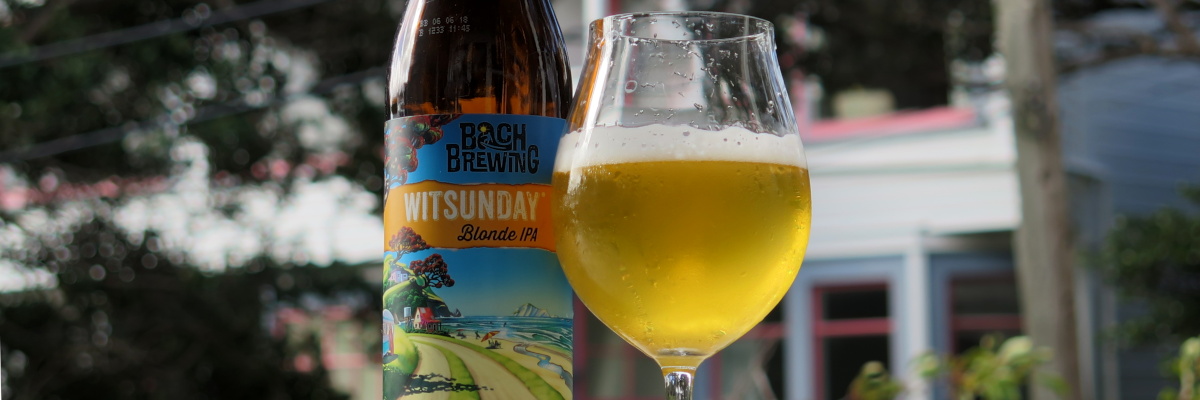
After going on about “batting averages at the beer awards”, you can imagine how chuffed I was that the Guild included a category just for that, celebrating the entrant with (in my terms) the highest PPE for their beers. The only extra criterion was that medals had to be earned in two different trophy classes, and that’s what gave the gong to Bach (PPE 1.83) over Craftwork — who entered just one beer and got a silver for it, and thereby a PPE of 2.0.8 Bach beers are reliably excellent,9 and I think this is a great addition to the awards on offer: this is a genuine, readily-understood sense of excellence worth celebrating. The Guild probably should tighten up the criteria a little, though; it wouldn’t seem right for a brewery to win it with just two beers ahead of an almost-as-good performance from someone like Bach, who entered six. Perhaps a five-entry minimum could be written in — I’d even entertain the idea that it should be as high as 10. That would still leave a third of all breweries in the running, and it’s hard not to be particularly impressed by a performance like North End’s — an MPC of 90 and a PPE of 1.7, only two places behind Bach overall.
Champion Large NZ Brewery: Lion
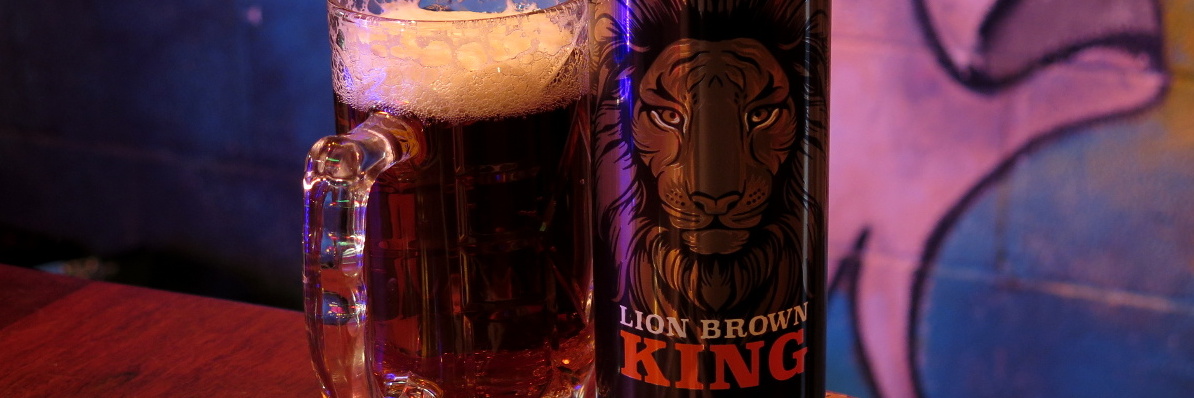
If the Championship hadn’t been split into three volume-based tiers, Lion would’ve been the outright winner. They and ParrotDog both won four golds, and Lion had two more silvers, which breaks the tie in their favour. There’s always an inevitable minor wailing from some circles when a “macro” wins one of these things,10 but it’s important to remember that these are the beer awards, not the craft beer awards — even if we could agree on a criteria to split off the latter, and even if we wanted to, this ain’t it; these are, quite rightly, open to all comers. If you don’t think there’s merit in style categories like “New Zealand lager”, where the largest companies traditionally fare particularly well, or if you think their bigness is automatically a mark against them, then you just might be a snob.11 And anyway, “large” is defined here so as to include more than just the traditional triopoly of Lion, D.B., and Independent;12 I don’t have a list of who was in the running at this level (more than two million litres annual production), but the Guild tell me there were 13 breweries. Some of those will be sub-units of the “big three” (such as Panhead, Tuatara, and Boundary Road), but there’ll be at least a few “craft” / “independent” breweries at that scale, also.
Champion Medium NZ Brewery: ParrotDog
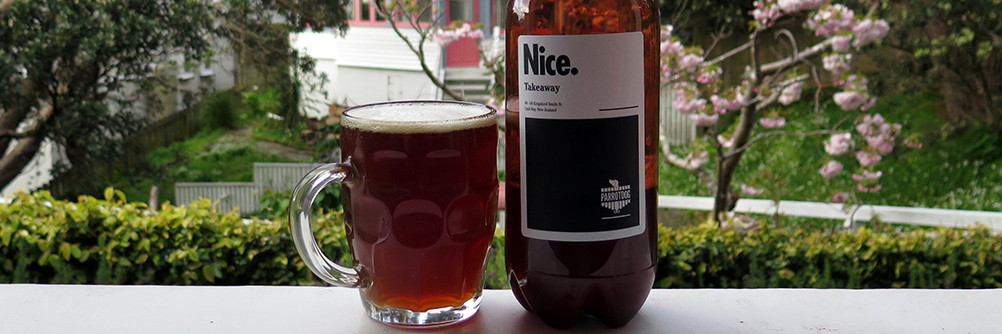
ParrotDog13 were decisively in second place overall, so they were the clear winners in this production tier — and combined that with a very impressive performance in terms of MPC and PPE; they’re sixth on my table in both of those columns. There were apparently 34 other breweries at this level, but the way the results came down don’t give us any clues about who’s “medium” and who’s “large” — you can see that competition is pretty fierce among these top two tiers, though.14 If D.B., McLeod’s or 8 Wired had just one of their silver medal beers instead win a gold, they’d have taken a title. The other interesting thing about ParrotDog’s result, from my perspective, is that they had the second-best improvement over their 2017 results of all the breweries in the ten-or-more-entries set that I focus on; their MPC was up 23 points, while most breweries didn’t change by more than 10 points, up or down.15 The often-cited story about how their new brewery is doing them good certainly gets some support from the numbers.
Champion Small NZ Brewery: Fork

Most of the local breweries / companies / entities contesting the beer awards count as “small” (less than a hundred thousand litres annual production): 59 out of 96. Adding in a Championship just for them makes all the sense in the world — especially if the cutoff is set at a level that lots of winners will soon outgrow and ‘graduate’ into the next tier. Fork’s MPC and PPE are at the competition-level average, but their medal haul is pretty amazing; they’re 10th on the overall table and — you know, just for example — thoroughly kicked Boston Beer’s ass no matter how you look at it. It’s definitely a performance that deserves of a round of applause and some silverware, and a worthwhile way to direct some public attention.
Champion NZ Beer: Moa Southern Alps
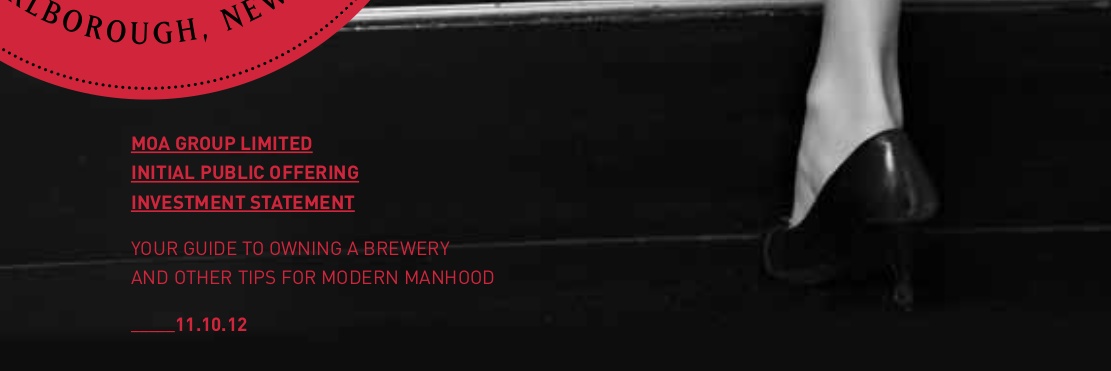
Finally, the “Best in Show”. Each of the eleven trophy-winning beers were in the running for this, and Moa’s White IPA came out on top. I don’t have any data to talk about for this, given the nature of the competition.16 My complaint is more conceptual than that; I can’t really make sense of how a given IPA might be a better IPA than some other lager is a lager.17 There’s also the practical concern that the winner of this title might soak up disproportionate media coverage, given the shallow understanding of just what beer styles even are among the general public and the media. I’m not sure that has actually eventuated, here — coverage in general seems pretty light, to me, and only peppered with the usual small confusions that the industry usually gets — but that’s more through luck than planning. Geoff Ross, at least, didn’t seem to convince anyone at the newspapers, or the stockmarket, with his nonsensical assertion that the win was “a reflection of the momentum Moa has in the market”. This result is an outlier, for them; their performance this year was significantly down on 2017’s figures, with their MPC tumbling by 20 points.
And… that’s about all I have to say about that. For now. It’s nice to get the numbers out of my head for another year, and time to read some philosophy homework, like I should’ve been doing all day. My working spreadsheet is here — let me know if you find a mistake or any interesting patterns I’ve missed.
- Partial disclaimer: I was on the judging panel for the beer writing award, but didn’t have anything to do with the actual beer awards as such that I’m about to discuss — I just wish I could help design these things.
- Or rather, each contestant. Which might be an “actual” brewery, or it might be a contract brewing company, or it might be a collection of brands under the banner of a bigger thing. It gets complicated. Ordinarily, I’m a massive stickler for keeping all that straight — but here it’d just get too unwieldy, even for me. I think the Guild’s system for determining what is a unique entrant — that Panhead is separate from Lion, but that Monteith’s is part of D.B., for example — actually works fine, in this context.
- In this kind of competition, a beer fails to get a medal on the grounds of it being either significantly faulty, or by being deemed outside the style guidelines for the category under which it was submitted. But we don’t know which factor applies in any given case — or, indeed, if it’s both.
- The scoring is relatively ‘flat’ (no huge premium for a gold) because multiples of each medal can be awarded in each category. It’s not like at the Olympics. Think of medals, here, as more comparable to school grades — golds are As, silvers are Bs, etc..
- Thanks, again, to the ridiculously easy-to-use TablePress plugin for WordPress.
- I wondered if they might’ve been entered by their local importer, Beertique, but apparently not; they were there on their own right. I just wish they weren’t so lonely.
- On those terms, Pirate Life would’ve won (although, of course, perhaps there would’ve been more contestants). It might feel a little strange to hand the title to a brewery who scored no gold medals ahead of Boston Beer, who scored two golds, but I can’t get past the thought that the latter’s 80% failure rate just has to count for something.
- And a perfect MPC of 100 — which is impressive, but not unprecedented. Seven other breweries managed it, this year: 165 Brewing, Brewaucracy, Canyon Brew Co., Isthmus, Seven Brews, Sparks, and The Fermentist. But all of those breweries just put in a single beer, besides Sparks (3) and Canyon (4).
- They’re made at Steam, who are frequent winners of the Champion Manufacturer title. Criteria for that also haven’t changed, but I don’t really have any gripes or analysis to offer about that — partly because it remains competitive (Steam just are that good), and partly because I don’t have any data to crunch on this; the results just don’t include those details (and I can’t think of any graceful way for them to do so, so I’m not mad).
- The tone of — and comments on — this article provide a great example of this wrong-headedness. It’s just not true that the “big players” dominate the awards, at least in modern times.
- Lion’s performance this year was almost identical to Garage Project’s championship-winning turn last year, in numerical terms — across the number of beers they entered, their MPC, PPE, and the distribution of medals —so if you think one of those wins is “legit”, but the other isn’t, you should check your biases.
- Note to foreigners and the blissfully-unaware: the latter are New Zealand’s most-misleadingly-named brewing entity, being a wholly owned subsidiary of Asahi. Lion is part of Kirin, and D.B. is Heineken.
- Who I work for, writing label copy and such, it’s worth noting.
- We can deduce from Fork’s win of the “small” tier that every brewery that did better than them — Lion, ParrotDog, D.B., McLeod’s, 8 Wired, Kererū, Garage Project, Liberty and Behemoth — are either “large” or “medium”.
- Only Panhead improved by a greater amount (29 points), which is worth pondering if you’re prone to worrying about quality decline after a buyout… This stuff does get pretty noisy, though, so I didn’t bother including it in the table. Maybe after several more years we’ll have something worth looking for real trends in.
- After a couple of years of this, if they keep it up, maybe it’ll turn out that some styles win disproportionately often or something. But for now, the numbers aren’t much help.
- Even if the judges used a more-specific numerical scoring system behind the medals, how would you break a tie? And in any case, the Guild’s own criteria imply that any prior scores are discarded, and the trophy winners are tasted against each other as equals.
